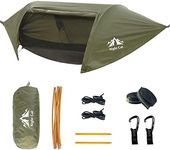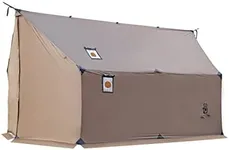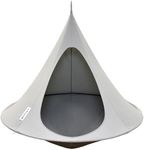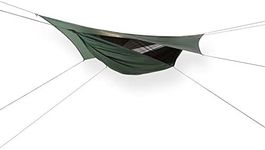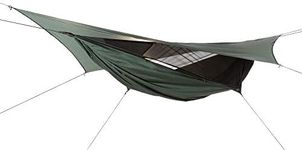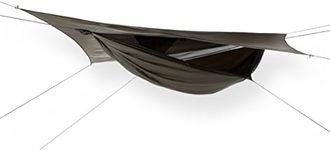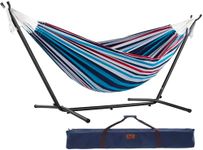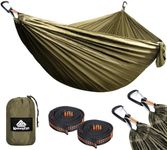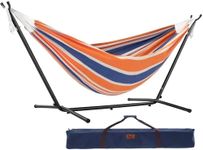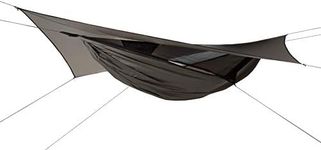Buying Guide for the Best Camping Hammocks
Choosing the right camping hammock can significantly enhance your outdoor experience. A good hammock should be comfortable, durable, and suited to your specific needs. To make an informed decision, consider the following key specifications and how they align with your camping style and preferences.MaterialThe material of a camping hammock affects its durability, weight, and comfort. Common materials include nylon, polyester, and cotton. Nylon is lightweight and strong, making it ideal for backpacking. Polyester is also durable and resistant to UV rays, which is great for long-term outdoor use. Cotton is very comfortable but heavier and less weather-resistant. Choose nylon or polyester for lightweight and durable options, and cotton if comfort is your top priority and you don't mind the extra weight.
Weight CapacityWeight capacity indicates how much weight the hammock can safely support. This is crucial for safety and comfort. Hammocks typically range from 200 to 500 pounds. If you plan to use the hammock alone, a lower capacity may suffice. For two people or if you want extra durability, opt for a higher capacity. Always check the weight capacity to ensure it meets your needs.
SizeHammock size affects comfort and usability. Single hammocks are narrower and lighter, suitable for one person. Double hammocks are wider, offering more space and comfort, and can accommodate two people. If you prefer more room to move or plan to share the hammock, choose a double. For solo use and lighter packing, a single hammock is ideal.
Suspension SystemThe suspension system includes the straps and carabiners used to hang the hammock. A good system is easy to set up, adjustable, and tree-friendly. Look for straps that are at least 1 inch wide to prevent tree damage. Adjustable straps allow you to set the hammock at the right height and tension. Ensure the carabiners are strong and reliable. A quality suspension system makes setup quick and secure.
WeightThe weight of the hammock is important, especially if you are backpacking. Lightweight hammocks are easier to carry and pack. They typically weigh between 1 to 3 pounds. Heavier hammocks may offer more comfort and durability but can be cumbersome to carry over long distances. Choose a lightweight hammock if you need to minimize your pack weight, and consider a heavier option if comfort and durability are more important for your camping style.
Weather ResistanceWeather resistance determines how well the hammock can withstand elements like rain, wind, and UV rays. Some hammocks come with built-in or optional rain flies and bug nets. Look for materials that dry quickly and resist mildew. If you camp in varied weather conditions, a weather-resistant hammock with additional protection features will keep you comfortable and safe.
PortabilityPortability refers to how easy it is to pack and carry the hammock. Consider features like a built-in stuff sack, compact size when packed, and overall weight. A portable hammock is essential for backpacking and hiking, where space and weight are limited. Ensure the hammock packs down small and is easy to carry.

